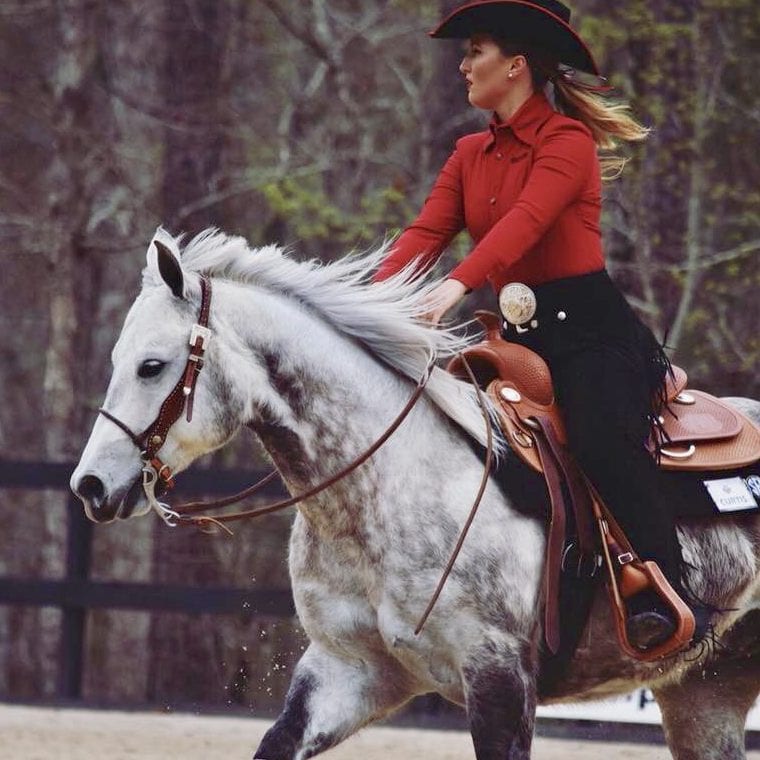WACO, Texas – The path to a spot on an NCEA level program’s roster is different for every rider. Two things are constant in the recruiting process – many athletes are trying to reach the sport’s highest collegiate level, and space is minimal.
NCEA equestrian programs have a maximum of 15 scholarships at their disposal, but some carry more than 60 athletes at a time. Most riders do not receive a full-ride athletic scholarship, instead of using a combination of athletic, academic and personal money to cover the costs related to school. Some riders do not receive any athletic financial aid at all, joining a program as a walk-on, but they still receive the same benefits.
A coach can’t communicate via email, text, phone call or through social media messaging with an athlete about being a prospective recruit until September 1 of that rider’s junior year in high school. Also, coaches are not allowed to comment on social media posts; they can only like or share these posts. But current NCEA riders say waiting until then to start thinking about college can put you behind in figuring out your future.
Several current NCEA riders offered up some insight to help the next generation of athletes get prepared for recruiting.
1. Be aggressive
Grady Lyman honed – in quickly. A California native, Lyman wanted to ride collegiately for years. She did her research and decided that South Carolina was the school she wanted to attend.
The next step was making sure the Gamecocks would be interested.
Starting with her junior year, Lyman made regular contact with the USC staff, sending competition results and videos of her latest rides.
“It’s essential that you show to the coaches whatever you’re best at, whether it’s over fences or on the flat, but it’s imperative that you send them videos so they can see what you have to offer,” Lyman, an incoming freshman, said.
Be aware – you’re not the only one, and there are only so many spots.
Schools carry somewhere between 10-60 riders, depending on how big the program is. Coaches estimate they can receive videos and other mail from more than 100 prospects every year and only about a fourth of the roster turns over each season. The key is to differentiate yourself from everyone else.
“You want to contact the coaches and let them know that you’re out there. Bug them a little bit. Keep sending them videos, email them your results. You want them to know about you. You want them to want you,” Lyman said.
2. Get familiar with the unfamiliar
In the show world, most riders compete on a horse that they either own or lease, but at the very least are incredibly familiar with.
Consider NCEA competition the exact opposite.
At every event, riders are given a horse they’ve likely never seen before. That makes the need to get comfortable quickly a must.
“The best riders are the ones who can get on any horse in any state and just ride it where it is, knowing that this pattern is maybe not going to be the most amazing thing ever, but I can make it better than the other girl I have to ride against,” Fresno State senior Taeya Harle said.
Every horse brings a different personality to the arena. While some won’t spook at the sound of fireworks going off right behind him, others will jump at a sneeze. Riding an older, well-trained horse is much different than riding a younger, less experienced animal, even for the most veteran riders.
Making videos on different horses will show coaches a rider’s ability to take on diversity, which is a must in college.
“Having one horse and one ride all the time, it’s great, and it teaches you so much, but it also teaches you to be a very stagnant kind of rider,” Delaware State junior Eva Epstein said. “You can always improve, but you’re always working on the same things. Getting the opportunity to ride other horses, you’re getting opportunities to learn new ways to do everything.”
3. Understand the idea of team
It’s a concept that’s hard to grasp before enrolling in school, but it is arguably the most significant difference between NCEA and the show world –rides might be individual, but the riders are now part of a team.
With a range of 10-60 athletes on some rosters and highly contested spots for competition, it’s crucial to understand the team aspect of the NCEA. Most riders are coming from small groups or one-on-one training. Now, they are among riders of equal talent all vying for the same thing.
“(Being on a team) does teach you to work with others and be coachable. Things like that are significant, and coaches look for that – ‘Is this athlete coachable? Can they take constructive criticism? Can they work well with others? Can they lead?” Epstein said. “Those are all skills you would hope to have by the time you get to college, but with it being such an independent sport, sometimes it’s difficult, especially your freshman year.”
While the coaches are there to help and teammates can offer good advice, sometimes the responsibility to get better directly falls on the student-athlete diagnosing a problem and figuring out how to fix it.
Because rosters are big and coaching staffs are small, understanding what is going on and how to address it are crucial problem-solving skills.
“Learn how to coach yourself – this is happening with this horse. Learn how to fix it by yourself. Not everybody can be watched at the same time, and that’s different than industry,” Harle said. “It’s not just getting on and riding … You’ve got to learn self-reliance.”
CLICK HERE to ream more from NCEA.









